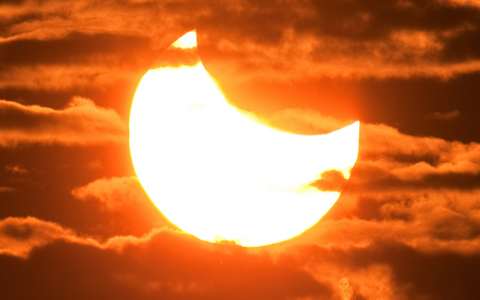2020 may have delayed some space missions, but it's full steam ahead in the world of space exploration in 2021.
Yep, this year, multiple missions are set to explore Mars, a giant telescope will be the next great detective in the universe, and NASA is getting ready to send humans back to the moon -- more specifically -- the first female to land on the moon! There is a lot to look forward to this year, so let's dive in.
Further Exploration of Mars

Exploring Exoplanets
2021 will also -- hopefully-- be the year that the James Webb Space Telescope will launch! This telescope could be the next great detective in the universe. From answering questions about our solar system, to studying exoplanets (planets outside the solar system) in new ways, this new space technology is set to answer some big questions for NASA scientists.
The launch of this observatory has been delayed due to the pandemic but is now set to launch on October 31, 2021 -- making for an even more exciting Halloween. What's fascinating about this telescope is that it has a massive mirror that extends out 21ft by 4ft. This will allow it to collect more light from objects that it observes. It's the largest mirror that NASA has ever built!

The NASA Artemis Program
Great strides are set to be made in 2021 with NASA's Artemis program. The Artemis program plans to land the first woman and the next man on the moon in 2024. The astronauts will explore the moon's south pole and focus on conducting experimental science and learning more about the origin of water on the moon.
With this program, NASA will collaborate with commercial and international partners and establish sustainable exploration by the end of the decade. The hope is to use what they learn on and around the Moon to take the next giant leap – sending astronauts to Mars!

Vera C Rubin Observatory
The Vera C. Rubin Observatory is set to make observations in 2023 from its location in Chile. This observatory is named after one of the most influential astronomers who passed in 2016. Rubin mentored fellow aspiring female astronomers and actively advocated for women in science.
This observatory is a large car-sized camera that will capture complete panoramas of the southern sky every few nights. It's the world's largest digital camera that's able to spot a golf ball from 15 miles away while capturing stunning 3,200-megapixel images!
The camera will begin its testing this year and the "first light" of the observatory is set to happen, as well. The "first light" is the first astronomical image captured by a telescope. We're excited to see what mysteries this magnificent camera will be able to unlock in our universe!







